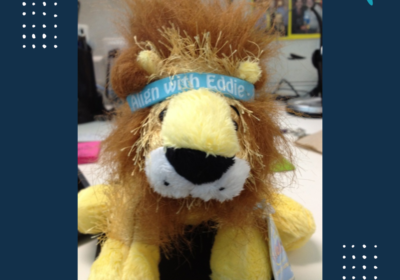Gratitude is the positive emotion of being thankful. It includes the capacity to appreciate what we have and thank others for their contributions. This E3 Emotional Quality is such a powerful leadership capability. The rewards of mastering this are exponential – gratitude boosts morale, enhances well-being, and improves productivity within a team. It’s so simple to act upon, but easily forgotten in practice. We all want to express gratitude and know it is the right thing to do, but if it isn’t second nature, an unconscious competency in your leadership toolkit, it will too often fall to the bottom of the priority list.
Unconscious Competence
As leaders, our goal should be to learn and practice this skill regularly so that gratitude becomes automatic – done without thinking about it. The amazing thing is that gratitude as a skill is completely learnable, fun to practice, and only requires intention to master.
Consider gratitude in context of the four levels of learning:
- Unconscious Incompetence – we don’t know what we don’t know
- Conscious Incompetence – we know we don’t know something and can embark on learning
- Conscious Competence – we know how to do it, but have to be deliberate when applying it
- Unconscious Competence – the skill becomes second nature; we don’t even realize we are doing it
As positive psychology research demonstrates and what we intuitively know as humans, when the expression of gratitude is fully incorporated into how we operate as leaders, spouses, friends, consumers, and citizens, the ultimate result is greater happiness.
Awareness
Awareness provides a foundation to grow your gratitude practice. It is the most important quality of E3 Leadership. The greater our ability to understand the preferences and perceptions of ourself and others, the greater our ability as leaders to relate, engage and adapt accordingly. We discussed self-awareness in detail in our Weekly Leadership Challenge.
Check out our You Tube series E3 Emotional Qualities to learn more about the other E3 Leadership capabilities.
Five Steps to Grow our Gratitude Practice
1. Self-reflection – The best place to start is with yourself. Learning to be aware of what you are thankful for will help you identify opportunities to demonstrate gratitude. This exercise, practiced consistently, will help build good behaviors.
- Take 5 minutes to sit in a quiet place and silence your mind. Take a few deep breaths, say a prayer, or just be. Then write down everything in your professional life that you are grateful for or that you appreciate. There are no wrong answers! Just keep writing. Feel free to extend it to 10 minutes if you’re in the energy of gratitude.
- Review that list and identify the people who may be associated with that appreciation, i.e., a team member, peer, past boss, friend, family, or even a stranger. While doing this, don’t forget to list yourself!
- Reach out to this list of people, maybe one a day, and truly thank them in whatever way seems most authentic. A simple hug in the middle of the day, an email, a text, a slack message, a LinkedIn message, a handwritten note, a positive thought.
- Repeat for 30 days until this becomes a habit, and you are doing it unconsciously.
For example, today I reached out to the CEO of the first software company I ever worked for. He took a chance on me, and it changed my life. Even though it was 23 years ago, it is never too late to show your appreciation.
2. Survey others – Understanding how others like to be appreciated is something we tend to overlook. Some people like to be publicly recognized, while others prefer private recognition. For each of us, gratitude can be expressed in so many ways. It might be as simple as a smile, a verbal thank-you, doing a task for others without being asked, visiting someone, sending a text saying you are thinking of them, a handwritten note, or sending a token (flowers, gift card), etc. The list is endless. And it is different for everyone and different circumstances. The key is to understand what others' preferences are.
- Start with yourself. How do you like to be appreciated? Have you told others? For me, it is feedback when I am sharing information. Everyone that works with me knows that because I explicitly tell them, "I love feedback, people!"
- Make a list of the 5 most important people in your personal or professional life. Ask them how they like to be appreciated. This is not a question that comes up often for most people. It may require self-exploration on their part, so don’t be surprised if the first reaction is defensiveness, embarrassment, or uncomfortable banter. It is why I suggest you first practice with people you know and trust.
- A great example of this is the conversation I started with my husband:
- KATHY: “Ralph, how do you like to be appreciated?”
- RALPH: Shyly and with a smile he said, “I know you love me,” and leaned in to kiss me.
- KATHY: But I pressed on, “No really. What actions or words help you know that I appreciate you?”
- RALPH: “Just asking this question is enough, dear.”
This wasn’t as easy as I thought it was going to be! I continued to probe, and it created an entire dialogue, which then prompted the question for him to ask me the same question. We talked about a number of “acts of gratitude” that were meaningful to us, including: just saying “I appreciate you” in random and unexpected moments, long lingering moments when we look each other in the eye, flowers (because it helps me know he is thinking about me even when I am not around), listening to things I want throughout the year and the gift appearing under the Christmas tree. We both learned a lot in that conversation. And the conversation isn’t over. Expressing gratitude and learning how people’s preferences evolve over time isn’t a one-and-done thing but should be done repeatedly and with everyone we interact with.
- Most importantly, have this conversation with those in your professional circle: those who report to you, those who work side-by-side with you, your suppliers, your customers, even your bosses. Gaining awareness and asking the question is the start of demonstrating gratitude. Personally, I learned that someone on my team completely despised public acknowledgment. As an introvert, who hated the limelight, they would see any public gratitude as an embarrassment … enough to make them throw up. Glad I asked first!
3. Create an environment of continuous feedback – Often, feedback carries a negative connotation. If you ask someone if you can give them feedback, most often they will instantly be defensive and assume you are going to tell them that they did something wrong. When done correctly, you can create an environment where feedback is both reinforcing AND demonstrates gratitude. When others trust your intent to help them improve and be more successful, feedback will often be met with appreciation and even sought after. Your goal as a leader is to build trust and demonstrate that you care about them; you are helping to build them up, not tear them down. Here are some basic steps to start a culture of continuous feedback within your team.
- Have a team meeting and share with folks what feedback means to you. Explain your WHY behind the feedback … that you appreciate them, want them to personally succeed, want to work better together as a team. Show them you care deeply. Introduce the concept of positive and adjusting feedback.
- For 2 weeks or more, focus on giving only positive feedback. Structure it with 4 key talking points.
- Ask if you can give them feedback. If they say no, move on. You want to ensure people are in the right frame of mind to receive feedback.
- Articulate the specific action that they took. Be as detailed as possible. “Anna, I appreciate that you were proactive in sending me the status report.”
- Explain how it makes you feel or the positive outcome that resulted. (This is the WHY.) “It made my work so efficient because I did not have follow up and wait for it when I sat down to consolidate the information.”
- Confirm the positive action and continued steps they can take. ”Keep on being proactive, I appreciate it and I appreciate you!’
- When your team knows you care, when they start to trust that your intent is good, and when they learn that you are focused on their well-being, you can start to introduce adjusting feedback.
- Consider applying this same structure outside of the workplace, including with family, sports teams, and volunteer opportunities.
4. Operationalize Reward and Recognition programs – For those individuals who prefer gratitude expressed with public acknowledgment and being recognized for their achievements, consider establishing a Rewards and Recognition program within the company or, at a minimum, within your team
- Check with HR to understand what already exists and consider leveraging established structures, i.e., capabilities within the HR systems to send recognition, public recognition boards, etc.
- Create your own rewards and recognition programs within your team. Here are some easy ones you can implement without any cost:
- Celebrate anniversaries. Determine the anniversary start date of everyone on your team and set up a reminder in your calendar to recognize them and show appreciation. You can create certificates, send emails cc’ing senior management, acknowledge the anniversary during a team meeting, post it to a public channel, etc.
- Write handwritten notes to your team members. Ask your team for permission to have their home address. Commit to doing this at the start of a new year, new quarter, or a new project … whatever will be most impactful. Schedule time this in the calendar to ensure this happens.
- Create periodic awards. Set up quarterly (monthly, annual) rewards to recognize the team. Work with the team to define what the categories might be. It could be as simple as ‘Employee of the Quarter.’ Set up a process for nominations and ensure you follow up to recognize and reward.
- Normalize expressing gratitude. Create space in team meetings for individuals to share what they are grateful for, both personally and professionally, including others on the team or outside the team.
- Work with HR or management to encourage recognition programs beyond your team.
5. Practice, Practice, Practice – As mentioned, none of this is difficult. It is about ensuring it stays top of mind and becomes a habit; something you don’t even think about. Here are some additional basics that help build the muscle for gratitude.
- In every email, think about whether you can use the words ‘thank you,’ ‘I appreciate you,’ or ‘I am grateful for...’
- In conversations, use words to show your gratitude.
- Share with others what you are grateful for in your life. It is contagious.
- Bring others into the loop, especially with peer-to-peer recognition. If someone does something great, thank them, but also include their management chain to provide recognition.
In Conclusion
When we truly embrace gratitude and it becomes an unconscious action, we reap the benefits along with those on the receiving end of our gratitude practice.
Think about it…. When was the last time someone praised your work publicly in a meeting. How did it make you feel? For me, it puts a skip in my step, boosts my mood, and motivates me to pass it on. We all crave recognition and appreciation. It is one of the easiest skills to learn. It just takes practice to be great at it.
I appreciate you and all your ongoing support! I would be extremely grateful if you would pass on that appreciation to someone today.



